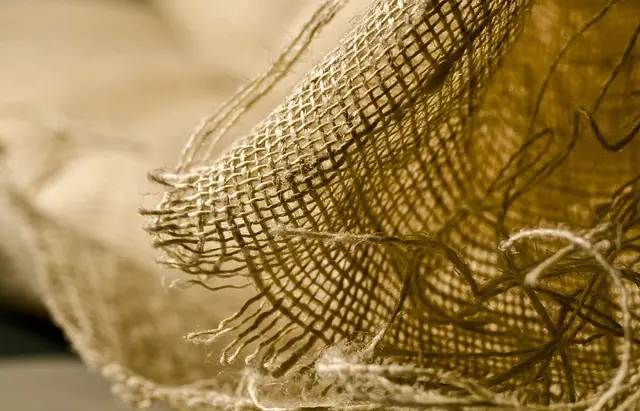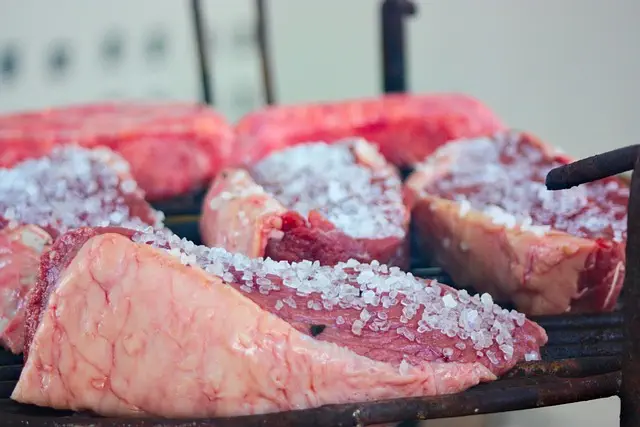Maeng Da, also known as "Pimp Leaves" and translating to English from Thai as "pheid drug," is a potent strain of kratom (Mitragyna speciosa) renowned for its alkaloid content, particularly 7-hydroxymitragynine and mitragynine, which have shown potential in natural pain relief. It interacts with brain opioid receptors to provide analgesic effects without the dependency risks of synthetic opioids. Maeng Da is being explored for its efficacy in managing chronic joint pain due to its balanced stimulant and sedative properties. While it has traditional uses substantiated by contemporary scientific research, it's important to exercise caution, seek medical advice, and be aware of regional legal statuses when considering Maeng Da or its relative, Mitragyna hirsuta, for pain management. The strain's translation to English reflects its potency and popularity, but its safe and effective use requires careful consideration due to the limited availability of human clinical trials to fully understand its benefits and risks. Users should prioritize high-quality, pure products and adhere to responsible use practices for optimal safety and effectiveness.
explore the multifaceted nature of joint pain and its widespread impact on individuals globally. This article delves into the emergence of Maeng Da Kratom, a natural remedy, as a potential solution for those suffering from this debilitating condition. We examine the therapeutic properties of Mitragyna Hirsuta, commonly known as kratom, and its role in alleviating joint pain. The focus then narrows to Maeng Da Kratom, translating its benefits into English for clarity, highlighting its distinct potential for relief. Understanding how to safely incorporate Maeng Da Kratom into a health regimen is crucial, which this article addresses alongside the scientific studies substantiating kratom’s analgesic effects. Additionally, we compare Maeng Da with other kratom strains, offering a comprehensive overview of its efficacy in the realm of joint pain management.
- Understanding Joint Pain and Its Prevalence
- The Role of Mitragyna Hirsuta (Kratom) in Natural Pain Management
- Maeng Da Kratom: A Closer Look at Its Potential for Joint Pain Relief
- How to Safely Use Maeng Da Kratom for Joint Pain
- Exploring the Scientific Evidence Behind Kratom's Analgesic Effects
- Comparing Maeng Da with Other Kratom Strains for Joint Pain Management
Understanding Joint Pain and Its Prevalence

Joint pain, a common affliction that affects individuals across various ages and demographics, is characterized by discomfort or pain in one or more joints, which can significantly impact daily activities and overall quality of life. This condition can arise from a myriad of causes including wear and tear, injury, autoimmune diseases like rheumatoid arthritis, and infections. Its prevalence is notable, with millions experiencing its debilitating effects annually. The search for effective relief methods is consequently a priority for those affected. In this context, interest in the use of kratom, a plant-based substance from Southeast Asia, has grown as an alternative or complementary approach to managing joint pain. Maeng Da, a popular strain of kratom, has garnered attention due to its specific alkaloid profile that is believed by some to offer pain-relieving properties. Users often translate the benefits of Maeng Da into English terms by describing it as an effective aid for alleviating joint discomfort and promoting a sense of well-being, which can be particularly valuable for those with chronic joint conditions. The potential of kratom, particularly Maeng Da, in joint pain relief is an area of growing interest, warranting further research to understand its efficacy and mechanisms of action.
The Role of Mitragyna Hirsuta (Kratom) in Natural Pain Management

Mitragyna hirsuta, a close cousin to the more widely recognized Mitragyna speciosa, which is commonly known as kratom, has garnered attention in natural pain management. While the species differ slightly in their alkaloid profiles and effects, both are used for their analgesic properties. The leaves of M. hirsuta contain a complex blend of compounds, including 7-hydroxmitragynine, which is believed to be more potent than morphine, and mitragynine, the primary active constituent in kratom. These alkaloids interact with opioid receptors in the brain, offering pain relief without the need for synthetic opioids, which can lead to dependency and other adverse effects. Users often report that the Maeng Da strain, a popular variant of kratom derived from both red and green vein leaves, provides a balanced effect that is both stimulating and soothing, making it effective for managing various types of pain, from chronic to acute discomfort.
The use of Mitragyna hirsuta as a natural remedy for joint pain relief has been documented in traditional medicine practices. Modern research supports these traditional uses, indicating that the plant’s alkaloids can influence the body’s opioid receptors, leading to analgesic effects. This makes M. hirsuta a promising alternative for individuals seeking to alleviate joint pain without the side effects associated with conventional pharmaceuticals. It is important for potential users to approach this remedy with caution and to consult healthcare professionals before integrating it into their pain management regimen, as individual responses to kratom can vary. Additionally, the legal status of kratom varies by region, and its availability may be subject to regulation.
Maeng Da Kratom: A Closer Look at Its Potential for Joint Pain Relief

Maeng Da Kratom, whose name translates to “Pimp Leaves” in English, is a robust strain originating from the forests of Thailand. This particular variety of Mitragyna speciosa, the botanical name for kratom, has garnered attention for its unique alkaloid profile that may contribute to its efficacy in joint pain management. Users often report the effects of Maeng Da as being both stimulating and soothing, which can be beneficial for individuals seeking relief from joint discomfort while also maintaining energy levels. The alkaloids present in Maeng Da Kratom, such as 7-hydroxmitragynine and mitragynine, are thought to interact with the body’s opioid receptors, potentially providing pain-relieving effects. This interaction may help alleviate the chronic pain associated with joint conditions, offering a natural alternative to conventional pharmaceuticals.
When considering Maeng Da Kratom for joint pain relief, it is crucial to approach its use with caution and informed decision-making. The strain’s potency means that dosage plays a significant role in determining its effects. Users should start with a lower dose to gauge their response and consult with healthcare professionals before integrating Maeng Da Kratom into their wellness regimen, especially if they are managing a pre-existing condition or taking other medications. The potential for joint pain relief through Maeng Da Kratom, backed by its rich alkaloid content, makes it a subject of ongoing interest and research within the field of natural remedies. Users interested in exploring this option should prioritize quality and purity, adhering to responsible use guidelines to maximize safety and efficacy.
How to Safely Use Maeng Da Kratom for Joint Pain

Maeng Da Kratom, a strain derived from the Mitragyna speciosa tree native to Southeast Asia, has garnered attention for its potential pain-relieving properties. The leaves of this strain are known for their high alkaloid content, particularly 7-hydroxymitragynine, which is believed to contribute to its analgesic effects. When considering Maeng Da Kratom for joint pain relief, it’s crucial to approach its use with caution and informed decision-making. Users should start with a low dosage to gauge individual sensitivity, as the strain’s potency can vary between batches and vendors. It’s advisable to adhere to the translucent guidelines provided by experts in the field when translating Maeng Da Kratom’s engagement into English for joint pain management. This means following a regimen that aligns with one’s body’s response while being mindful of the recommended dosages, which typically range from 1 to 5 grams ingested orally. It’s also essential to monitor the effects and adjust usage accordingly, avoiding combinations with other potent substances, especially those affecting the central nervous system. Regular assessment of joint pain levels can guide the optimization of Maeng Da Kratom intake for long-term efficacy and safety. Users should consult healthcare professionals before integrating Maeng Da Kratom into their wellness regimen, particularly if they have underlying health conditions or are taking other medications. With careful consideration and responsible use, Maeng Da Kratom may serve as a natural alternative for those seeking relief from joint pain.
Exploring the Scientific Evidence Behind Kratom's Analgesic Effects

Mitragyna speciosa, commonly known as kratom, has been the subject of increasing interest in natural medicine circles for its potential analgesic properties. Scientific research exploring kratom’s effects on pain relief has yielded mixed findings, with some studies suggesting that specific alkaloids within the plant may interact with opioid receptors in a manner akin to traditional opiate drugs. This interaction is believed to be responsible for kratom’s reported analgesic effects. Maeng Da, a popular strain of kratom, has been particularly examined due to its high alkaloid content, which may enhance its pain-relieving potential. Preclinical studies have demonstrated that certain alkaloids like 7-hydroxymitragynine and mitragynine may modulate pain signals in the brain, potentially offering relief for individuals with chronic or acute pain conditions. However, it is crucial to approach these findings with caution, as human clinical trials are limited, and more research is needed to fully understand kratom’s role in pain management and its potential benefits and risks. The scientific evidence, while promising, does not yet provide a definitive conclusion on the efficacy of kratom for pain relief, emphasizing the need for further rigorous studies.
Comparing Maeng Da with Other Kratom Strains for Joint Pain Management

Maeng Da kratom, often referred to as “Pimp Leaf” due to its larger and more potent leaves, is a popular strain among those seeking relief from joint pain. The maeng da translation to English simply denotes its origin from the forests of Southeast Asia, where it thrives. This strain is distinctive not only in appearance but also in alkaloid composition, which contributes to its efficacy in managing joint discomfort. Compared to other kratom strains such as Bali or Thai, Maeng Da is noted for its balance of mitigating pain and providing energy. Its effects are often described as more stimulating, which can be beneficial for individuals who require a blend of pain relief without sedation, allowing them to maintain productivity during the day. Users report that Maeng Da offers a longer-lasting analgesic effect, which can be particularly advantageous for those experiencing chronic joint pain. The strain’s ability to interact with the body’s opioid receptors may provide significant relief without the risk of addiction associated with traditional prescription painkillers. When considering Maeng Da for joint pain management, it’s important to note the strain’s individual response can vary, and it should be used responsibly as part of a holistic approach to health and well-being.
Maeng Da kratom, a potent strain often referred to in its native Thailand as “Pimp Leaves,” has garnered attention for its potential in joint pain relief. This article has delved into the prevalence of joint pain, the natural pain management properties of Mitragyna Hirsuta, commonly known as kratom, and the specific efficacy of Maeng Da. The scientific evidence supporting kratom’s analgesic effects is promising, though users are advised to approach its use with caution and adherence to recommended guidelines for safety. When considering natural alternatives for joint pain relief, Maeng Da kratom emerges as a noteworthy option, with its benefits and mechanisms of action offering a translation to English of traditional remedies in managing discomfort. It is crucial to consult healthcare professionals before integrating Maeng Da or any other kratom strain into one’s health regimen to ensure safe and effective joint pain relief.






